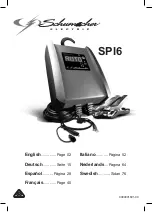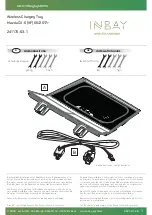
TOWING A TRAILER
WARNINGS
Do not exceed 62 mph (100 km/h).
The rear tire pressures must be
increased by 3 psi (0.2 bar) above
specification. See
Technical
Specifications
(page 165).
Do not exceed the maximum gross
train weight stated on your vehicle
identification plate. See
Vehicle
Identification Plate
(page 166).
Do not exceed the maximum
permissible nose weight, i.e. vertical
weight on the tow ball, of 110 pounds
(50 kilograms).
The electrical system is not suitable
for towing trailers with more than
one rear fog lamp.
Note:
Not all vehicles are suitable or
approved to have tow bars fitted. Check
with your dealer first.
Place loads as low and central to the
axle(s) of the trailer as possible. If you are
towing with an unladen vehicle, the load
in the trailer should be placed toward the
nose, within the maximum nose load, as
this gives the best stability.
The stability of your vehicle to trailer
combination is very much dependant on
the quality of the trailer.
In high altitude regions above 3 281 feet (1
000 meters), the stipulated maximum
permitted gross train weight must be
reduced by 10% for every additional 3 281
feet (1 000 meters).
Steep Gradients
WARNING
The anti-lock braking system does
not control the overrun brake on the
trailer.
Change down a gear before you reach a
steep downhill gradient.
TOWING POINTS
(If Equipped)
Front Towing Eye
The towing eye is located in the luggage
compartment under the floor cover.
The towing eye must always be carried in
the vehicle.
Pry off the cover and install the towing eye.
Note:
The screw-in towing eye has a
left-hand thread. Turn it anti-clockwise to
install it. Make sure that the towing eye is
fully tightened.
113
Ecosport (CBW) Vehicles Built From: 01-12-2014 Vehicles Built Up To: 29-03-2015, CG3590en enGBR, Edition date: 08/2014, First Printing
Towing
















































